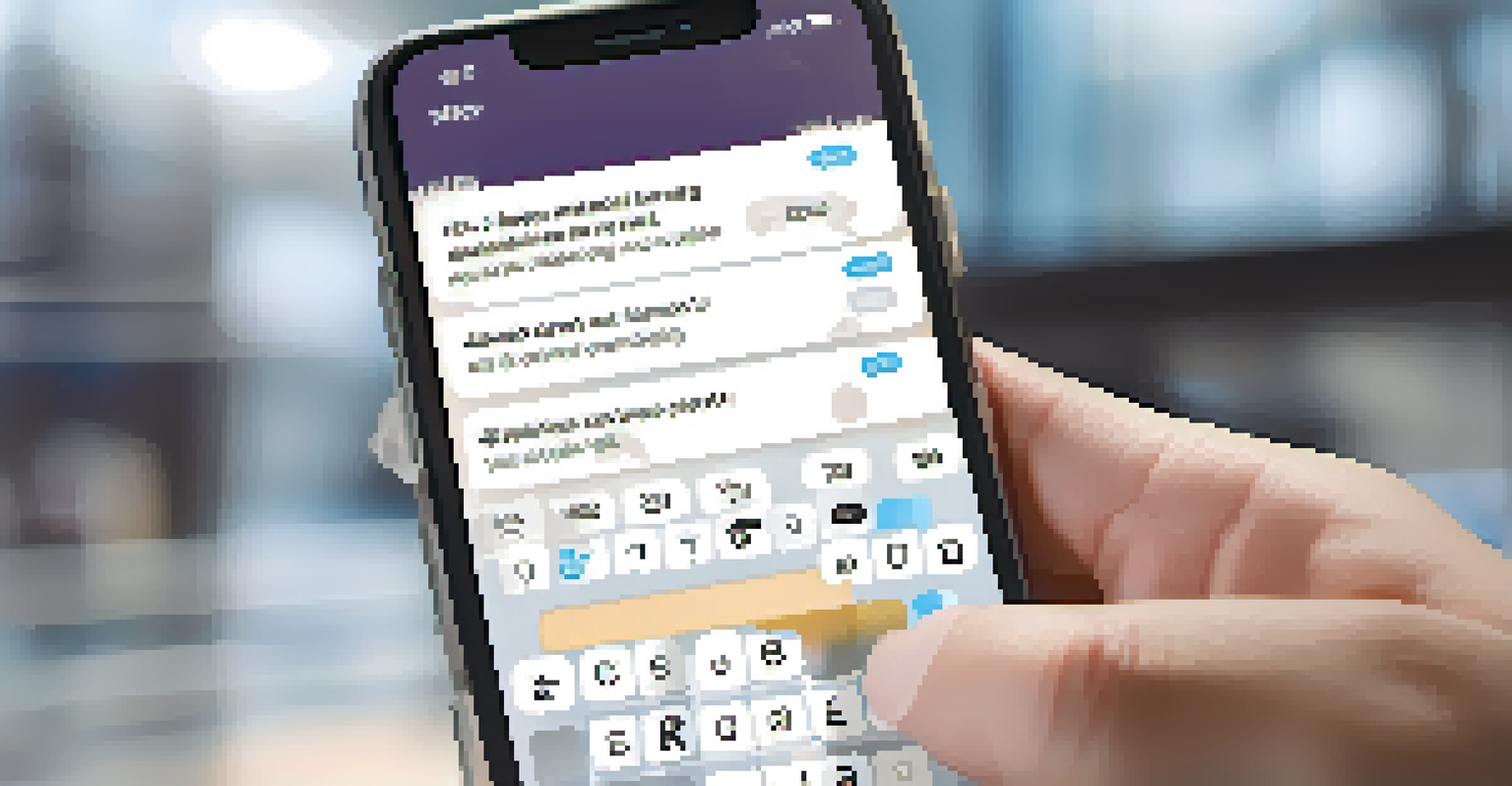Applications of NLP in Everyday Technology

NLP in Voice Assistants: Your Personal Helper
Voice assistants like Siri, Alexa, and Google Assistant have become a staple in many homes. They rely on Natural Language Processing (NLP) to understand and respond to our spoken commands. This technology allows users to set reminders, play music, or even control smart home devices just by talking.
The greatest benefit of NLP is not just the ability to understand language, but to foster a deeper understanding of human emotions and intentions.
Imagine asking your assistant to play your favorite song or set an alarm for the morning. Thanks to NLP, these interactions feel natural and intuitive. The system processes your voice input, converts it into text, analyzes the intent, and provides a relevant response—all within seconds.
As the technology continues to advance, we can expect voice assistants to become even smarter, understanding context and nuances in conversation. This means they could soon handle more complex tasks, making our daily lives even easier.
Chatbots: Customer Service Revolution
Chatbots are one of the most visible applications of NLP in customer service. These AI-driven programs can handle inquiries, resolve complaints, and guide users through troubleshooting—all in real-time. They provide instant responses, which is a significant improvement over traditional email support.

For instance, if you have a question about your bank statement, a chatbot can provide answers without you having to wait on hold for a human representative. They analyze your text input, understand your questions, and deliver the appropriate information. This not only saves time but also enhances customer satisfaction.
NLP Enhances Voice Assistants
Voice assistants like Siri and Alexa use NLP to understand spoken commands, making daily tasks easier and more intuitive.
As businesses adopt chatbots, they are also learning to improve user experience. With advanced NLP, these bots can learn from past interactions, becoming more efficient and effective over time, ultimately leading to better service.
Text Prediction: Smarter Typing
Ever noticed how your phone suggests words or completes your sentences while you type? This feature is made possible through NLP. Text prediction algorithms analyze your writing patterns and the context of your current message to provide relevant suggestions.
Technology is best when it brings people together, and NLP does exactly that by breaking down language barriers and enhancing communication.
For example, if you start typing 'I can't wait to', your phone might suggest 'see you' or 'go there' based on common phrases. This not only speeds up the typing process but also helps avoid typos, making communication smoother.
As NLP technology evolves, we can expect even more personalized suggestions that cater to our unique writing styles. This will make everyday communication not just faster, but also more enjoyable.
Sentiment Analysis: Understanding Emotions
Sentiment analysis is another fascinating application of NLP that helps technology gauge human emotions. Companies use this technique to analyze customer feedback and social media interactions, determining whether they are positive, negative, or neutral.
For instance, if a restaurant receives a flurry of positive comments on a popular dish, they might decide to feature it more prominently on their menu. On the flip side, if negative feedback arises, they can address the issues quickly, improving customer satisfaction.
Chatbots Improve Customer Service
By utilizing NLP, chatbots can handle customer inquiries and complaints in real-time, significantly enhancing user experience.
This application of NLP not only helps businesses respond effectively but also allows them to adapt their strategies based on real-time consumer sentiment, making it a powerful tool in today's fast-paced market.
Language Translation: Bridging Communication Gaps
NLP has significantly transformed language translation, making it easier for people to communicate across different languages. Tools like Google Translate utilize NLP to provide real-time translations, allowing users to understand languages they do not speak.
Imagine traveling to a foreign country and using an app to translate a menu or ask for directions. Thanks to NLP, these translations are getting more accurate and context-aware, enabling smoother interactions.
As the technology continues to develop, we could see even more nuanced translations that capture local dialects and cultural references, making global communication more seamless than ever.
Text Summarization: Digesting Information Quickly
In a world overflowing with information, text summarization powered by NLP helps us consume content efficiently. This technology condenses lengthy articles or reports into concise summaries, allowing readers to grasp key points quickly.
For example, news outlets often use NLP algorithms to summarize articles, giving readers an overview without having to read the entire piece. This is particularly useful for busy professionals who want to stay informed without dedicating a lot of time.
NLP Transforms Language Translation
NLP tools like Google Translate provide real-time, accurate translations, bridging communication gaps across different languages.
As NLP continues to improve in this area, we can expect even more accurate and contextually relevant summaries that help us navigate the vast sea of information at our fingertips.
Personalized Content Recommendations: Tailored for You
Many streaming platforms and e-commerce websites use NLP to analyze user behavior and preferences, offering personalized content recommendations. By understanding what you like, these systems can suggest shows, movies, or products that align with your interests.
For instance, if you've been binge-watching a particular genre, the algorithm can recommend similar titles, enhancing your viewing experience without you needing to search endlessly. This not only saves time but also keeps you engaged with content you love.

As more platforms adopt this technology, we can expect recommendations to become even more accurate, creating a customized experience that feels uniquely yours.
Future of NLP: Endless Possibilities Ahead
The future of NLP is bright, with endless possibilities shaping the way we interact with technology. As advancements continue, we can expect more sophisticated applications that further enhance our daily lives, from improved healthcare systems to smarter educational tools.
Imagine a world where NLP can help doctors analyze patient data more effectively or assist students in learning new languages through interactive conversations. These applications could lead to significant improvements in various sectors, making our lives more efficient and enjoyable.
As we embrace these advancements, it’s essential to remain mindful of the ethical implications of NLP. Balancing innovation with responsibility will ensure that these technologies serve us well into the future.